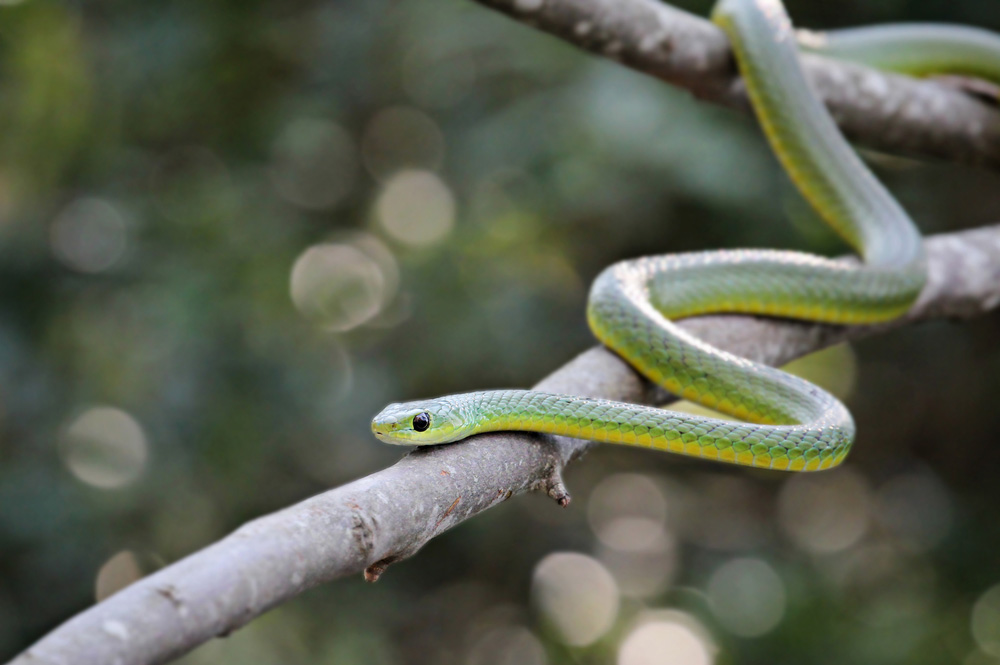Any animal that has the potential to kill is often feared and sometimes misconstrued as a ‘killing machine’… And there have been many reality TV shows and Hollywood movies that have unfortunately ramped-up such fears for sensationalism and money at the box office. However, those that understand snakes a little better, know that this is not true. Yes, certain species of snakes can be very dangerous if provoked or accidentally harmed, but if left alone and given space, in almost all circumstances these animal will take the gap that has been provided and will try to make their escape.
A snake’s venom is of extreme value to its survival and snakes will try to converse their venom for its intended purpose, to hunt it’s prey and protect itself, when necessary. They do not simply go on a hunt for humans, we are not their natural prey. If a snake is encountered, please keep children and animals clear of the area for as long as necessary, so that the snake is not provoked and forced to defend itself or harmed in any way.
If required, contact a professional snake wrangler to safely capture and remove the snake from your area. Do not try to catch (or kill) a snake, especially if you have little or no experience with them. There is a good chance you are putting yourself in harms way, particularly with very fast moving snakes like Mambas or fast striking snakes like Puff Adders. If you can reach the snake, it can reach you and a lot more quickly than you may think!
In the interest of greater awareness, we have provided some additional information and videos to hopefully help further enlighten the general public with regards to snakes. Our goal is to promote a healthy respect where we and other potentially dangerous animals can live in harmony.
NB: AS PER THE DETAILS ON OUR WEBSITE, WE FOCUS ON PROACTIVE PREVENTATIVE MEASURES. WE TRY AND DISCOURAGE SNAKES FROM ENTERING YOUR AREA, RATHER THAN A TAKING REACTIVE APPROACH, WHICH USUALLY IS A BIGGER PROBLEM TO DEAL WITH.
KwaZulu-Natal Snakes
There are several snake species in KwaZulu-Natal. Most are harmless and there are a hand full of venomous snakes to be aware of. Below is a list of the most venomous snakes found in KZN – Please keep the above in mind, particularly with these species of snake…
HIGHLY VENOMOUS SNAKE SPECIES IN KZN
Black Mamba – Highly Venomous: A large snake, averaging 2,2m-2,5m in length. Not the aggressive killers that they’re made out to be. Very shy and nervous, and will always flee if given half a chance. Common in valley areas. Mainly feeds on rodents and dassies (hyrax).
Green Mamba – Highly Venomous: Restricted to the KZN coastline. Can get quite large and are a beautiful, plain emerald green colour. Not often seen, and are shy like its cousin. Feeds on birds, rodents and lizards.
Mozambique Spitting Cobra, aka ‘Mfezi’ – Highly Venomous: Plain brown on top, with orange and black bands underneath the neck region. Usually a salmon-pink colour underneath. Can spray its venom 2-3m, so don’t get too close! Feeds on toads, rats and sometimes other snakes.
Vine/Twig Snake – Highly venomous: Very common, but rarely seen, for obvious reasons! Bites are very rare. Feed on chameleons, other lizards, smaller snakes (such as bush snakes) and nestling birds.
Boomslang – Highly venomous: Males are a beautiful green colour with black bands. Feeds on nestling birds, chameleons and other lizards. May take small rodents. Females are light brown in colour. Can resemble a mamba. Boomslang have almost have a rugby ball-shaped head, with large eyes, unlike the mamba with a more slender head. Juvenile Boomslang are also Highly venomous. That big green eye is very distinctive! All juveniles look like this upon hatching, and change colour as they grow.
Puff Adder – Highly Venomous: Found more inland of Durban, as well as North and South of Durban. Common in the Midlands, Drakensberg and Zululand. Feeds mainly on rodents, but also eats toads.
*IMPORTANT: Please have a look at the images provided as per the source link (button) below. Also take note of the snakes that are considered ‘Venomous’, but not lethal, and those that are considered harmless species.
Source: kznamphibianreptileconservation.com
Common Snake Venoms
There are generally four primary types of snake venom that exit. Snake venoms are complex mixtures of proteins, and are stored in venom glands at the back of the head. In all venomous snakes, these glands open through ducts into grooved or hollow teeth in the upper jaw. These proteins can potentially be a mix of neurotoxins, hemotoxins, cytotoxins, bungarotoxins and many other toxins that affect the body in different ways. Almost all snake venom contains hyaluronidase, an enzyme that ensures rapid diffusion of the venom.
Neurotoxins: Are toxins that are poisonous or destructive to nerve tissue (causing neurotoxicity). Neurotoxins are an extensive class of exogenous chemical neurological insults that can adversely affect function in both developing and mature nervous tissue.
Hemotoxins: Hemotoxins, haemotoxins or hematotoxins are toxins that destroy red blood cells (that is, cause hemolysis), disrupt blood clotting, and/or cause organ degeneration and generalized tissue damage. The term hemotoxin is to some degree a misnomer since toxins that damage the blood also damage other tissues. Injury from a hemotoxic agent is often very painful and can cause permanent damage and in severe cases death. Loss of an affected limb is possible even with prompt treatment.
Cytotoxins: Cytotoxicity is the quality of being toxic to cells. Examples of toxic agents are an immune cell or some types of venom, e.g. from the puff adder (Bitis arietans) or brown recluse spider (Loxosceles reclusa).
Bungarotoxin: Are a group of closely related neurotoxic proteins of the three-finger toxin superfamily found in the venom of kraits including Bungarus multicinctus. α-Bungarotoxin inhibits the binding of acetylcholine (ACh) to nicotinic acetylcholine receptors; β- and γ-bungarotoxins act presynaptically causing excessive acetylcholine release and subsequent depletion. Both α and β forms have been characterized, the α being similar to the long or Type II neurotoxins from other elapid venoms.


